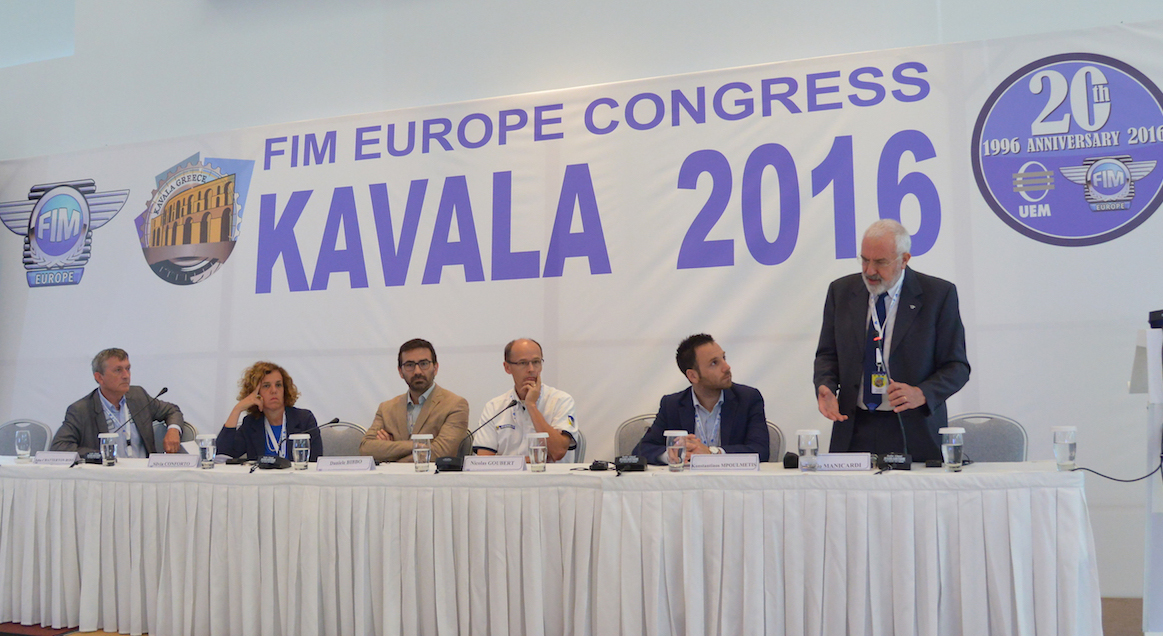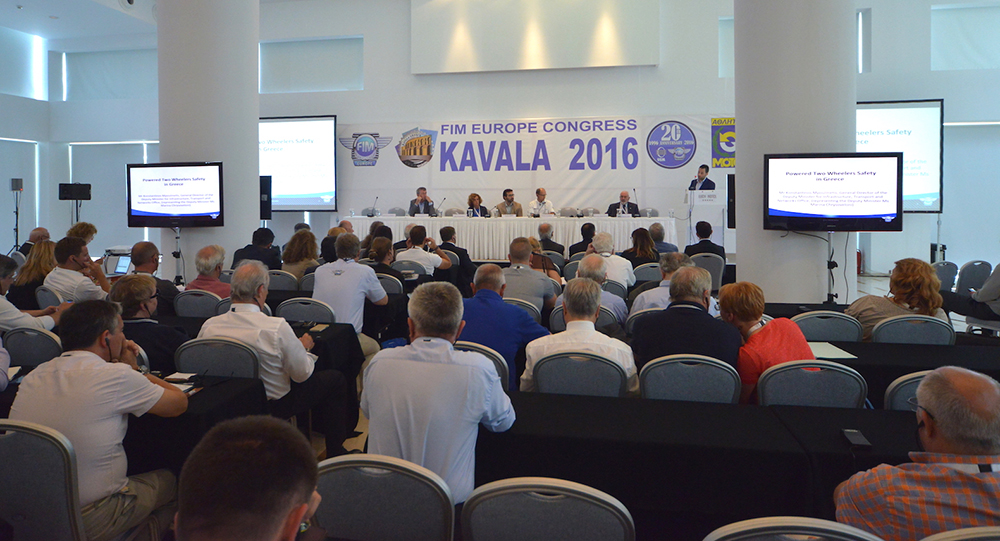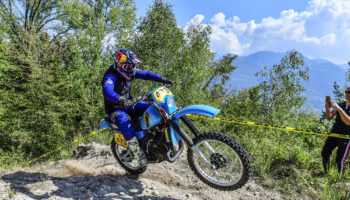
The 22nd FIM Europe Congress in Kavala (Greece) hosted the 10th edition of Road Safety Conference, which traditionally deals with the most important and updated topics of the matter.
In the latest years, the Road Safety Conference dealt with road accidents, industry responses and initiatives, the systems to improve Road Safety, traumatic injuries and first aid, 2 wheeler behaviour and safety, roadside barriers and crash tests, and devices derived from track, such as airbag for motorcyclists. Last year, the Road Safety Conference dealt with themes related with the development of electronics to increase usability and safety both on track and on road.
All these issues can be seen on FIM-Europe website
http://www.fim-europe.com/index.php/social/public-affairs/road-safety
The main focus at this year’s conference dealt with the development of electronics and technology.
The conference was held under the auspices of Silvio Manicardi, FIM Europe vice-president, and of Jean-Pierre Moreau, Chairman of Public Affairs Commission, who opened the event with a welcome speech.
The agenda of the conference foresaw as first speech the intervention of a representative of the hosting Country – Mr Konstantinos Boulmetis, Director of Deputy Minister of Transports Marina Chrysoveloni, who focused on “Powered Two Wheelers Safety in Greece”. From the report it stood out that according to the statistics related to the performance of the EU Member States, Greece holds one of the highest positions in deaths by collision among the Countries in the EE. The poor performance of drivers in Greece, has mostly to do by a big percentage with speed violations and the lack of safety features. The Ministry’s first priority, is to form a Strategic Plan for Road Safety and the reform of an Interministerial Committee for Road Safety. The aim is to reduce deaths by road accidents in 2020 to 50% compared with 2010.
The report from the Director of Public Affairs – Mr John Chatterton Ross, FIM Europe Director of Public Affaires, followed: “Current issues facing motorcycling from Brussels”. In the report, he focused on the most important issues for FIM Europe at this time: The European Court of Justice and the case of Mr Vnuk (insurance problems in our sporting events); PPE – Personal Protective Equipment standards – gloves, boots, jackets, clothing and one piece suits (not helmets – they are dealt with by UN regulations); Relations between FIM, FIM Europe, and the Federation of European Motorcyclists Associations – FEMA; understanding the effect on FIM Europe work of the current political situation.
Mr Nicolas Goubert, Deputy Director and Technical Director of the Michelin Racing Group talked of the “Technology transfer from Racing to commercial products”. In particular, the racing disciplines are a fertile ground to develop technologies. “The question is now to make sure that what is useful for Valentino Rossi is useful for you when you ride your bike”, said Mr Goubert. “So the radial tyre passed from competition to the road: Michel Pilot Sport tyres were the first production tyres to use 100% silica-reinforced rubber compounds and benefit from improved performance both in the wet and in cold weather without compromising tread life. Summarising, transfers from racing to road can happen also in the measurement procedures and in the industrial tools domain: the racing department is the laboratory of the laboratory in the innovation strategy”.
The keynote presented during the Road Safety Conference at the 2016 FIM Europe Congress concerned on possible new technologies to be spent in motorcycling to increase the safety during riding. Mr Daniele Bibbo PhD, Biolab3-Biomedical Engineering Laboratory, University Roma Tre focused his intervention on “A window on future technology: from science fiction to reality”.
Some recent tools have been described outlining how, among those, little attention has been dedicated to the rider in terms of performance, risk perception and his/her interaction with the bike and the environment. To monitor the riders’ performance and to use the outcomes as a feedback for the bike, man-machine interfaces are a viable solution. These devices contain sensors for the measurement of some physiological signs that can be considered as predictors of the risk perception and as control signals to be sent to the bike for a safe riding. The implementation of such interfaces strictly needs to respect constraints such as easiness of use, minimal invasiveness, comfort in order to increase the safety without affecting the natural riding behaviour. Following this line, a pilot project carried on in the Biolab3 – Biomedical Engineering Laboratory – Roma Tre University, has been presented: the project regards an innovative helmet used to monitor the brain activity during riding, in order to activate some voluntary commands (i.e. turn indicators) or pre-activate safety device in emergency condition (brakes on perceived risk conditions). The researches presented can be interpreted as an example of how the technology from science fiction is moving to the reality.
The full presentations of the Conference are published on FIM Europe website in “Social” section at the following link:
http://www.fim-europe.com/index.php/social/public-affairs/road-safety
























